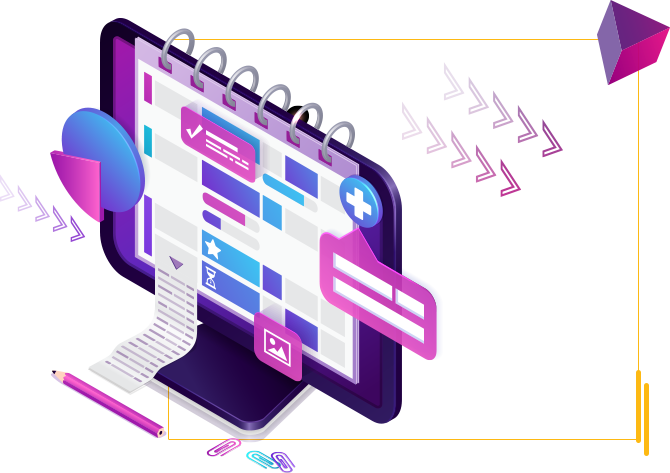
Enhance Your Workflow: Must-Have Web Development Tools and Technologies
At Web App Vault, we know how important it is to use the right web development tools to improve your online presence and make your business more successful.
In this article guide, you’ll learn about many powerful web development tools that can change how you build and keep your website. By using these tools well, you can improve the speed of your website, make it more enjoyable for users, and beat out your competitors in the digital world.
Let’s begin!


Content Management Systems (CMS)
A website’s growth depends on its Content Management System (CMS). It makes it easy for you to create, manage, and share digital material. The following content management systems (CMS) offer a variety of features and ways to make them fit your needs:
WordPress:
WordPress is the world’s most popular content management system (CMS). It runs more than 40% of all blogs on the internet. It is a great choice for businesses of all kinds as it is easy to use, has a large library of plugins, and has strong community support.
WordPress lets you make and run dynamic websites, blogs, and e-commerce systems.
Joomla:
Joomla is another well-known CMS that lets you build complex websites. It has advanced tools for managing content, supports many languages, and has many themes.
Drupal:
This very flexible CMS is known for its strong security features and growing ability. It is the most popular choice for big businesses and organizations with complex website needs. Drupal has advanced user control and workflows that offer changes and work well with other systems.
Front-End Web Development Tools
For people to pay attention to your website, you need to make it interesting and visually appealing. With the following front-end web development tools, you can create stunning pages and improve the user experience:
HTML (Hypertext Markup Language):
HTML is the most important part of any website. It gives a website its framework and content by defining the parts and how they relate. HTML allows you to create a layout that includes text, images, videos, and other files.
CSS (Cascading Style Sheets):
CSS is responsible for the presentation and styling of a web page. It lets you change the layout, colors, fonts, and other visual properties of HTML parts to look how you want. CSS enables you to make designs that look good and improve the user experience.
JavaScript
is a flexible computer language that makes web pages more interactive and dynamic. It gives you the tools to create websites that are engaging and easy to use.
Front-End Frameworks:
Bootstrap, Foundation, and Bulma are all examples of front-end frameworks. They offer a set of pre-made UI components and layout tools. These frameworks make it easier to build websites by giving you ready-to-use parts, responsive grids, and rules for how to style them. They help you save time and effort while making uniform and responsive designs.
Text Editors and Integrated Development Environments (IDEs):
Text editors and IDEs are powerful tools for writing and managing code. Popular options like Visual Studio Code, Sublime Text, and Atom offer syntax highlighting, code completion, and debugging capabilities. They enhance productivity and facilitate the development process.
Browser Developer Tools:
Every major web browser has developer tools built in that let you look at and fix web pages.
Such as:
- Chrome DevTools
- Firefox Developer Tools
- Safari Web Inspector
These tools can be used to analyze and change HTML, CSS, and JavaScript and to monitor network activity and performance data.
Who Are We?
We cater to all your business needs from digital
marketing to website development!

Version Control Systems (VCS):
are tools that help developers keep track of changes in a script, work with other developers, and quickly go back to older versions if needed.
- Git
- GitHub
- GitLab
These three well-known VCS tools make it easier for teams to work together smoothly.
- Git: This is a global version control system often used to make software. It lets writers keep track of all the changes made to their code. With Git, writers can keep track of additions, deletions, and file changes at a very fine level. It has tools like branching and merging, which allows for parallel development and keeps code changes from clashing. Git makes it easy to handle code repositories and makes sure that version control is done in a structured way.

- GitHub: GitHub is a service that hosts Git files on the web. It provides a platform for working together on software creation, making it easy for developers to work together. GitHub has features like tracking issues, tools for managing projects, and the ability to review code.
- GitLab: is another web-based tool for version control and Git repositories. It gives you a complete set of tools for the whole process of making software. GitLab makes it easy to work together, handle code repositories, and integrate with other development tools.
These front-end development tools give you the resources and features to make websites look good, engage, and work well. Using these tools well gives your users a better experience and keeps your audience’s attention.
Empowering Backend Web Development:
A strong backend system is what makes a website work well. Here are some back-end web development tools and methods that can make your work easier:
Server-Side Frameworks:
Frameworks like Node.js, Django, and Ruby on Rails make it easy to build web apps that can grow and work well. These systems have various features, such as routing, database integration, and authentication, that make backend development easier for workers.
Grow Human-Centered
Businesses
Online
Web App Vault is a custom web design and business
website development company that enhances the visibility
and credibility of businesses. We are an approachable
eCommerce service provider that fuels digital marketing.
We Are Here To Help
- Node.js: This popular runtime system lets JavaScript run on the server side. It gives you a platform for making real-time applications, APIs, and microservices that is scalable and works well. Node.js has many tools and frameworks, making it a great choice for building fast web apps.
- Ruby on Rails: This is a strong system based on the idea that simplicity and convention are more important than configuration. It makes it easy to make applications quickly by having a simple structure and many tools and plugins. Rails are very popular because they are easy to use and have a style developers like.
- Django: This is a high-level Python web platform that focuses on speed, security, and being able to grow. It is based on the “Don’t Repeat Yourself” (DRY) rule, which lets writers build complex web apps with little code. Django is a top choice for Python fans because it has a built-in admin interface and much support.
- Databases and Query Languages: Databases are vital to how web applications store and get data.
- API Development Tools: As the need for web APIs grows, tools like Express.js and the Django REST Framework make it easier to make RESTful APIs. These tools provide an organized way to build APIs. This makes it easy to connect APIs to front-end frameworks and for different parts of a web app to talk to each other.
Web App Vault – Your
Industry-Specific
Data Guardian
Our industry-specific web application solution
provides robust data security and a seamless user
experience tailored to your industry’s requirements.
Safeguard your sensitive data with assurance.

Providing Animation Services To
Clients In Multiple Cities Across USA & Canada
- Arlington
- Cleveland
- Jacksonville
- Miami
- Orlando
- Atlanta
- Dallas
- Louisville
- Minneapolis
- Philadelphia
- Austin
- Denver
- Kansas City
- New York
- Portland
- Chicago
- Houston
- Los Angeles
- New Orleans
- San Diego
Performance Optimization Tools
For a website to provide a great user experience, it needs to be fast and dependable.
The following tools can help you improve the speed of your website:
Page Speed Insights:
This powerful tool from Google checks how well your website works and makes ideas for improving it. It looks at how long it takes for a page to load, how well the code is written, and how well it works on a mobile device. By following the suggestions from Page Speed Insights, you can make your website faster and get people more interested in it.

Content Delivery Network (CDN):
(CDN): A Content Delivery Network (CDN) helps spread the information of your website over many servers around the world. By caching your website’s files closer to your users, a CDN cuts down latency and speeds up loading times. Adding a CDN to your website’s design can make a big difference in how well it works, especially for people worldwide.
Caching Mechanisms
Using browser and server-side caching can greatly affect how well your website works. Caching stores data that is often used, making it easy to get back and lowering the load on the server. Effective caching strategies allow you to get information to your users more quickly.
Wrapping up
To stay ahead in the world of web creation, which moves quickly, you need to use the right tools and technologies. Adding the tools and technologies listed above to your web development routine can help you be more productive, speed up processes, and make better websites.
Remember that the key is to find the right mix between design and development,use backend frameworks that work well, and understand automation’s power.
So, get these tools and learn how to use them well. You’ll experience an improvement in building websites.
